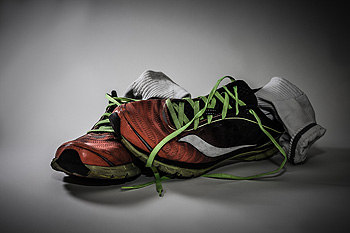
A blister that forms on the bottom of the foot can be extremely uncomfortable. The ball of the foot helps to bear the weight of the body, and it can be susceptible to blisters. The majority of blisters on the feet develop as a result of excess pressure, and the soles are no expectation. The skin on this part of the foot is thicker and doesn’t move as freely as the skin on other parts of the foot, in addition to having several more sweat glands that may lead to high friction. Shoes are generally worn for most of the day, often causing the feet to become sweaty. Additionally, many socks are made with materials that are not breathable, and this may add friction to this part of the foot. Relief may come from wearing a protective bandage on the bottom of the foot and may help in preventing blisters on the feet from developing. Some people choose to put powder in their socks, which absorb excess moisture. If you would like more information about how to treat and prevent blisters on the feet, please consult with a podiatrist who can address any concerns you may have.
Blisters are prone to making everyday activities extremely uncomfortable. If your feet are hurting, contact one of our podiatrists of Foot & Ankle Associates of Maine. Our doctors can provide the care you need to keep you pain-free and on your feet.
Foot Blisters
Foot blisters develop as a result of constantly wearing tight or ill-fitting footwear. This happens due to the constant rubbing from the shoe, which can often lead to pain.
What Are Foot Blisters?
A foot blister is a small fluid-filled pocket that forms on the upper-most layer of the skin. Blisters are filled with clear fluid and can lead to blood drainage or pus if the area becomes infected.
How Do Blisters Form?
Blisters on the feet are often the result of constant friction of skin and material, usually by shoe rubbing. Walking in sandals, boots, or shoes that don’t fit properly for long periods of time can result in a blister. Having consistent foot moisture and humidity can easily lead to blister formation.
Prevention & Treatment
It is important to properly care for the affected area in order to prevent infection and ease the pain. Do not lance the blister and use a Band-Aid to provide pain relief. Also, be sure to keep your feet dry and wear proper fitting shoes. If you see blood or pus in a blister, seek assistance from a podiatrist.
If you have any questions, please feel free to contact our office located in Brunswick, ME . We offer the newest diagnostic and treatment technologies for all your foot care needs.
